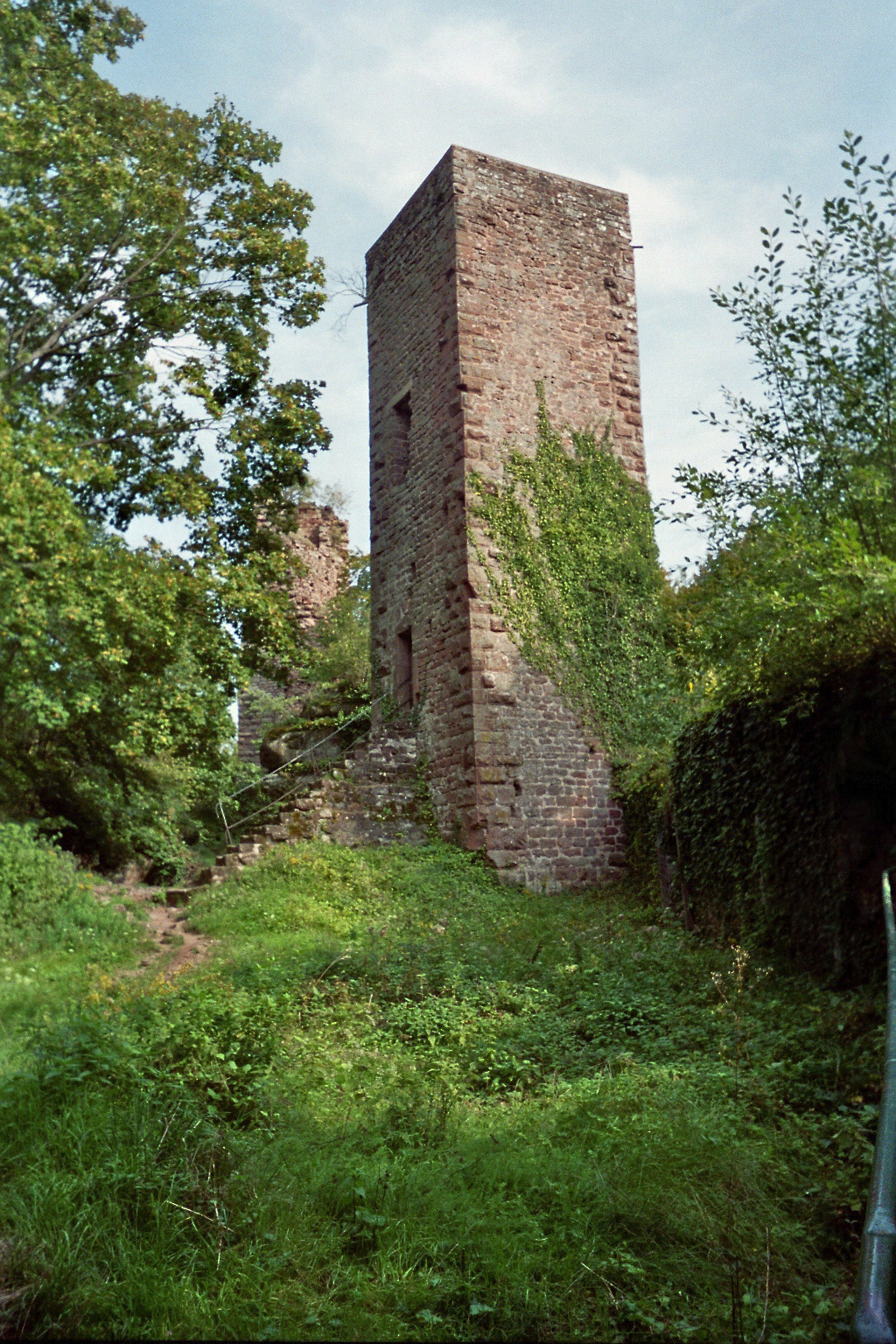|
Château D'Ochsenstein
The Château d'Ochsenstein is a ruined castle located in the ''commune'' of Reinhardsmunster, in the Bas-Rhin ''département'' of France. It was home to the Ochsensteins, a powerful family from medieval Alsace. The castle sits upon three sandstone spurs and comprises three separate castles: le ''Grand Ochsenstein'', le ''Petit Ochsenstein'' and a third building, thought to be called le ''Château de Wachelheim''. Ochsenstein castle has been classified as a ''monument historique'' by the French Ministry of Culture since 1898. Geographical location Position The Château d'Ochsenstein is located in the heart of the ''Forêt domaniale'' ( national forest) of Saverne and occupies the southern end of the Schlossberg mountain, at a height of 584 metres. The ruins tower above the glade and the Haberacker Forest House (altitude: 476 metres). The site is surrounded by steep slopes, except to the north of the Schlossberg summit plateau where the terrain is flat. The castle overlooks an old ... [...More Info...] [...Related Items...] OR: [Wikipedia] [Google] [Baidu] |
Reinhardsmunster
Reinhardsmunster () is a commune in the Bas-Rhin department in Grand Est in north-eastern France. See also * Communes of the Bas-Rhin department The following is a list of the 514 communes of the Bas-Rhin department of France. The communes cooperate in the following intercommunalities (as of 2020):Communes of Bas-Rhin {{BasRhin-geo-stub ... [...More Info...] [...Related Items...] OR: [Wikipedia] [Google] [Baidu] |
Marmoutier
:''See Marmoutier Abbey (Tours) for the former abbey in Tours.'' Marmoutier (; ) is a commune in the Bas-Rhin département in Grand Est in north-eastern France. The origin of the place is the former Marmoutier Abbey, of which the abbey church still serves as the parish church. History In 590 St. Leonhard, a disciple of Columbanus, founded a benedictine monastery which later was named after the abbot Maurus who modified it in the 12th century imitating the style of Hirsau. The church dates from this time. Above all the cloister flourished during the 14th century. In 1792 it disintegrated during the French Revolution. Jacob Frey, a writer, lived in Marmoutier from 1545 as town chronicler and notary. Sights The church of Marmoutier Abbey from the 11th century holds a pipe organ by the organ builder Andreas Silbermann. Église Saint-Blaise de Sindelsberg was built in 1584 and underwent renovation work in 1872. See also * Communes of the Bas-Rhin department The ... [...More Info...] [...Related Items...] OR: [Wikipedia] [Google] [Baidu] |
Die Deutschen Kaiser Rudolf Von Habsburg
Die, as a verb, refers to death, the cessation of life. Die may also refer to: Games * Die, singular of dice, small throwable objects used for producing random numbers Manufacturing * Die (integrated circuit), a rectangular piece of a semiconductor wafer * Die (manufacturing), a material-shaping device * Die (philately) * Coin die, a metallic piece used to strike a coin * Die casting, a material-shaping process ** Sort (typesetting), a cast die for printing * Die cutting (web), process of using a die to shear webs of low-strength materials * Die, a tool used in paper embossing * Tap and die, cutting tools used to create screw threads in solid substances * Tool and die, the occupation of making dies Arts and media Music * ''Die'' (album), the seventh studio album by rapper Necro * Die (musician), Japanese musician, guitarist of the band Dir en grey * DJ Die, British DJ and musician with Reprazent * "DiE", a 2013 single by the Japanese idol group BiS * die!, an inactive German ... [...More Info...] [...Related Items...] OR: [Wikipedia] [Google] [Baidu] |
Usufruct
Usufruct () is a limited real right (or ''in rem'' right) found in civil-law and mixed jurisdictions that unites the two property interests of ''usus'' and ''fructus'': * ''Usus'' (''use'') is the right to use or enjoy a thing possessed, directly and without altering it. * '' Fructus'' (''fruit'', in a figurative sense) is the right to derive profit from a thing possessed: for instance, by selling crops, leasing immovables or annexed movables, taxing for entry, and so on. A usufruct is either granted in severalty or held in common ownership, as long as the property is not damaged or destroyed. The third civilian property interest is ''abusus'' (literally ''abuse''), the right to alienate the thing possessed, either by consuming or destroying it (e.g., for profit), or by transferring it to someone else (e.g., sale, exchange, gift). Someone enjoying all three rights has full ownership. Generally, a usufruct is a system in which a person or group of persons uses the real property ... [...More Info...] [...Related Items...] OR: [Wikipedia] [Google] [Baidu] |
Château De Greifenstein
The Château de Greifenstein is a ruined castle in the ''Communes of France, commune'' of Saverne in the Bas-Rhin ''Departments of France, département'' of France. Property of the state, it has been listed since 1898 as a ''monument historique'' by the French Ministry of Culture. History The ''Grand-Greifenstein'' was, without doubt, founded in the first half of the 12th century by the knight Meribodo de Greifenstein who had close links to the Château d'Ochsenstein, Ochenstein family. The ''Petit-Greifenstein'' dates from the end of the 13th century or start of the 14th century. Description Visitors can distinguish two castles separated by a large ditch. The older part has the largest keep in Alsace with 13 metres a side. A renovated tower stands between the two keeps at the centre of the site. It was probably part of Grand-Greifenstein. From the terrace there is an unimpeded view of Saverne, the Château du Haut-Barr, the Château du Grand-Geroldseck, the valley of the Zorn ( ... [...More Info...] [...Related Items...] OR: [Wikipedia] [Google] [Baidu] |

